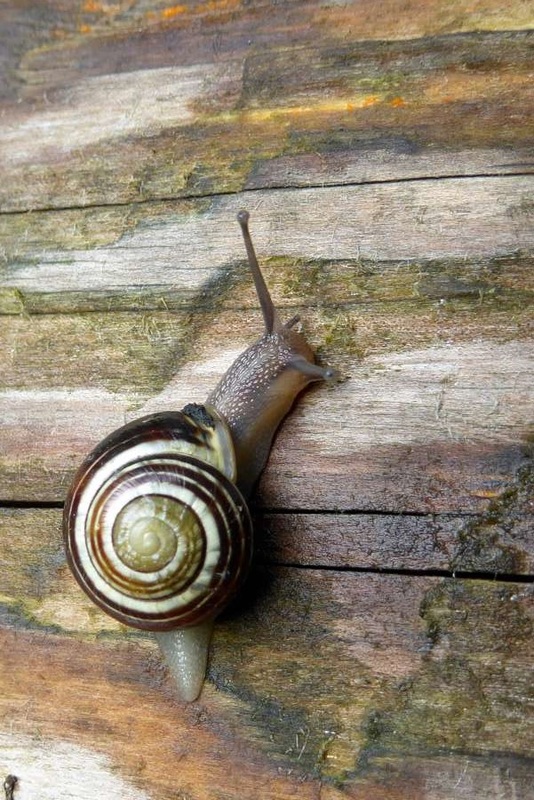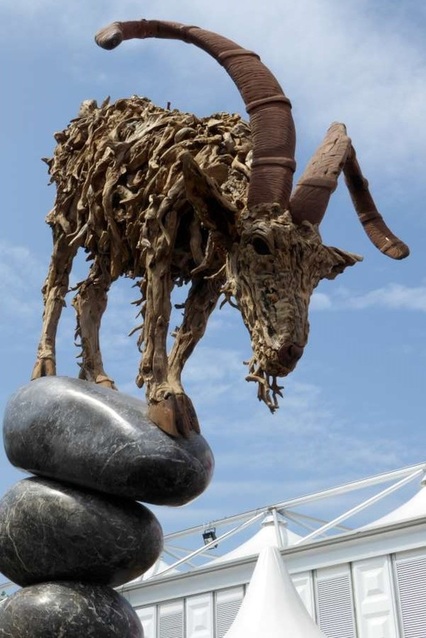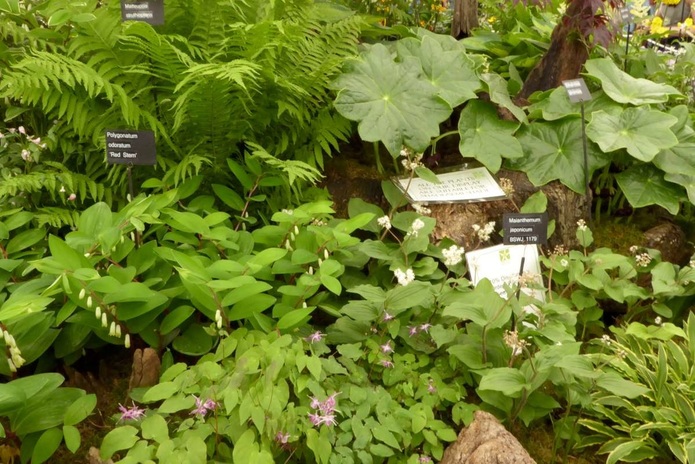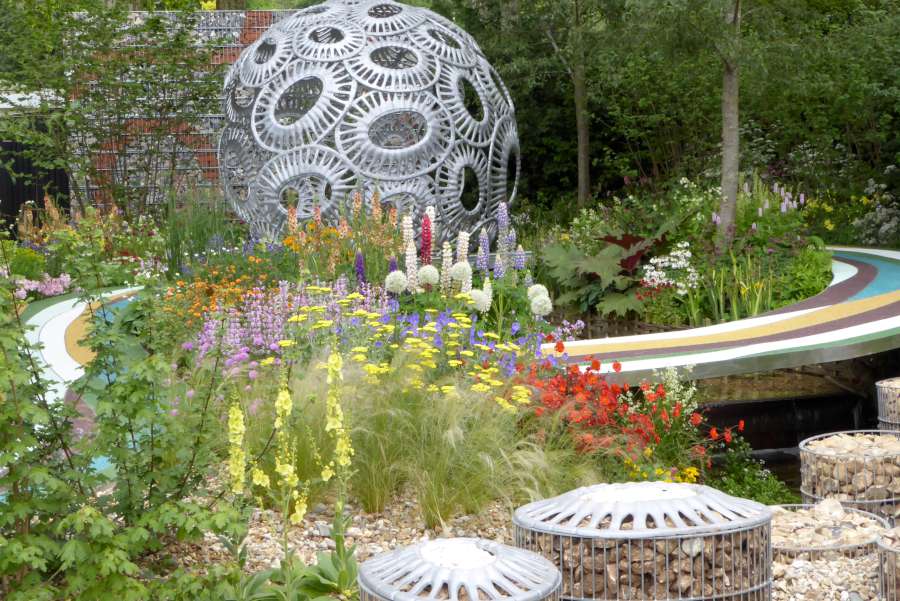The site of the nature reserve is well hidden in a bland and non-descript housing estate. I'd walked the streets nearby many a times without once suspecting there'd be an urban wilderness so close. Apparently, this "invisibility" is deliberate. High metal fences surround the plot, erected in the early 1980s by the local council to prevent fly-tipping. And then there is an opening in the fence, a gate, and a sign-board inviting you in. I followed it and suddenly, like stepping through the wardrobe into Narnia, I was in a different world.
I was "warned": online I'd read about the sound installation, an art project exploring the cultural heritage of this particular place. Up until industrialisation arrived, the area consisted of fields, meadows and market gardens. In the early part of the 19th century, urban poverty took over.
The next "stop" on the sound installation is about war, a poetic male voice talking about the experience of utter destruction. From 1846 on the site of the nature reserve was that of a church, St. Jude's, until it was bombed in World War II. Beyond rebuilding, and perhaps due to a lack of the means for it, nature took over. Decades later, locals recognized its value as a new sanctuary in its own right, cleared the ruins and campaigned for it to be protected.
As I stood and listened, sun streamed through the green, drops glistened everywhere, birds sang, a red robin sat close and the bells of a nearby church started to ring. It felt almost clerical or spiritual, for want of a better word.
32 species have been sown or planted in one area of the nature reserve, among them comfrey (Symphytum officinale), common nettle (Urtica dioica), dandelion (Taraxacum officinale), greater burdock (Arctium lappa), marsh mallow (Althaea officinalis), ribwort plantain (Plantago lanceolata), shepherd's purse (Capsella bursa-pastoris) and yarrow (Achillea millefolium). Now they are established, everyone is invited to come on opening days (Saturdays from 11am to 6pm) and harvest them for their own use, with the Phytology team on hand to educate and advise and to show how to brew teas or make lotions. There is a hut containing a library on the subject which you are welcome to explore, or you may be offered to sample some of the infusions the gardeners have mixed.
When I ambled around, I was approached very friendly by a man who turned out to be Michael, asking me whether I had been here before, wanted information or help and then encouraging me to pick from the plants according to my own needs or desires. A young woman had gathered a lovely bunch that looked more like a wildflower bouquet than herbs destined for use as DIY apothecary stock. It's easy to forget just how beautiful "medicine" can be.
Likewise, it is commonplace in Germany to buy dried medicinal herbs - readily packaged these days - in an apothecary or sometimes at markets. My "medicinal cabinet" used to include elderflower, lime-blossoms and the flowers of camomile, cowslip, coltsfoot, common mallow, great mullein, lavender and pot marigolds, as well as hop cones, fennel seeds, lemon balm, common sage, thyme, eucalyptus, hyssop, lady's mantle, hairy willow-herb and bearberry leaves amongst others. And that's not even counting the branded over-the-counter herbal remedies you can buy: ointments, balms, tinctures, extracts, pills... From upset stomachs to insomnia, these are the go-to-remedies for any minor illness. A GP might well prescribe say a particular, branded, extract from thyme and cowslip roots for your cough.
On coming to Britain, I was most surprise to find it wasn't the same here, too. Chemists stock next to no herbal remedies, products with Echinacea perhaps being the exception to the rule. Neither have I ever been prescribed one, not even for the children. When I once asked a GP why, the answer quite shocked me: "We don't believe in it!", I was told. Well - until comparatively recently in human history, herbal remedies were the only medication that mankind ever had. And what was pharmaceutical chemistry based on to start with?
But there is so much else to this project, a lot of which doesn't meet the eye immediately. As they describe themselves on their website: Phytology is an artist and community led project exploring the use, value, resilience and function of wilderness within urban ecosystems. Launched at Bethnal Green Nature Reserve in 2014, Phytology is part physic garden; part cultural institute; part urban wilderness; and a platform for collaboration between artist, musicians, writers and a wide variety of community groups.
I will have to come back to it with another post, I think. For now, here are a few pictures of the wildlife most visible in the Bethnal Green Nature Reserve last weekend: Hard to navigate as they were everywhere, thanks to the rain. Unlike in my own garden where inevitably they pose a threat to my beloved and cosseted green treasures, over there I could wholeheartedly enjoy them and admire their patterns and acrobatics.


























 RSS Feed
RSS Feed